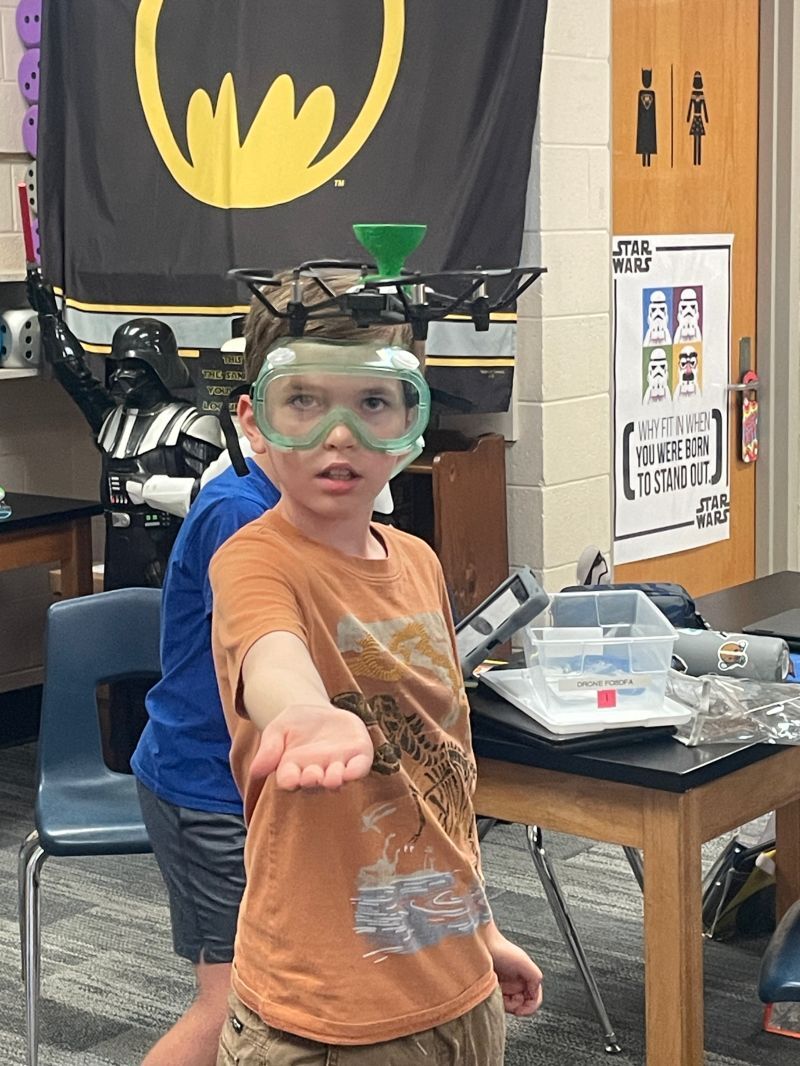With all the buzz about STEM learning today, it’s fun to explore the facts about how STEM early on helps students succeed.
To understand where we’re headed with science, technology, engineering, and math, first, we have to look at the current state of things, and what research tells us about what this means for the future.
From your friends at Drone Legends, here are some STEM fun facts to inform the educators and leaders of tomorrow (and today).
Facts about STEM Learning
First fun fact: STEM isn’t 100% technical learning. Teaching STEM subjects helps students practice essential life skills such as critical thinking, problem solving, innovation, teamwork, and confidence. A challenge teachers face is the ongoing need for creative approaches to maintain students’ interest in STEM.
Today, as many as 60% of 9th graders lose interest in STEM subjects by graduation, and over half of Americans don’t pursue these subjects because they assume it’s “too hard.”
Teachers have the concepts and textbooks, and the school curriculum is more STEM-focused than ever before. So, why are high school students still dropping off before they even graduate?
Students are living life in the real world. The better connected STEM instruction is to real world concepts and ideas, the more sustained interest it will achieve. A powerful dynamic is evolving here: as students become tech users from the very earliest ages, there are some organic opportunities to envision themselves in STEM careers. Sparking that interest, then keeping the candle burning, is about teaching the child, not just the idea.
STEM Education Facts in Elementary Schools
“If students don’t learn STEM the way we teach, then why not teach the way they learn?” asks Dr. Kenneth Wesson, Ph.D. and Educational Consultant of Neuroscience.
STEM and STEAM subjects in the United States are becoming more widely accessible, so how can we help students come alive with curiosity?
Introducing children to STEM concepts early on has resulted in stronger academic achievements across grade levels. As early as pre-K, students can develop math and technology literacy skills through play, observation, and hands-on activities.
A survey by Microsoft indicated that 20% of STEM university students decided they wanted to pursue STEM in middle school or earlier. Findings in Closing the STEM Gap show that girls who participate in science, technology, engineering, and math activities by middle school are more likely to take interest in STEM subjects throughout high school and college.
How do teachers get kids involved in STEM in early elementary grades? Immersive, hands-on experiences make STEM learning fun and relatable. From designing computer games to flying drones, teaching STEM in ways that kids like to learn is the answer to them wanting to learn.
STEM Learning Facts in the U.S.
The United States is not the highest performer in the world when it comes to student proficiency in science, math, and reading (Pew Research Center). On average, only half of U.S. schools offer computer science courses to their students. This is a vital insight that begs the question: how are future coders, Web 3 leaders, metaverse architects and more being equipped to compete in tomorrow’s markets?
Even though the U.S. ranked 30th place in math out of 64 countries, it stands at 11th in science (PISA). Girls who are encouraged to study STEM are more likely to achieve a degree or career in it. But there’s still a lot of work to be done: women still occupy less than 30% of STEM jobs in 2022.
The world, and the U.S., needs new science and engineering professionals. The country’s scientific workforce are aging, and there are currently not enough new employees to take their place as they approach retirement. Better STEM education will change that. With continued emphasis on implementing new STEM technologies and experiences in the classroom, there’s still time to build a future of market strength.
STEM Statistics in the Job Market
Some of the fastest-growing occupations between 2020 and 2030 exist in STEM fields. Wind turbine technicians are projected to grow nearly 70% by 2030 and statistician careers by at least 35%. Those are both highly “niche” industries. Just imagine all the potential jobs for coders, medical researchers, engineers, and more.
What’s even more salient for the growing demand to fill the job market is that more than 60% of the 13 million STEM employees hold a minimum education level of a bachelor’s degree. Getting students the college education they need for future jobs is a top priority.
The Massachusetts STEM Advisory Council projected that 80% of jobs by 2030 will require technology literacy and basic STEM skills. STEM jobs are doable, but there is a persistent gap in the education system that fails to equip future workers with the skills and applications they’ll need.
Inspiration for Higher STEM Learning
A parent-student survey by Microsoft found that students who went on to pursue STEM majors had one to three of these main influences:
- A parent with a STEM career who encouraged them to learn
- Teachers or mentors who made STEM interesting early on
- TV, video games, or toys that entertained usable STEM concepts
This same survey revealed that many college students choosing STEM fields today do so because of the promising job market.
68% of male STEM majors claimed their primary drive was to earn a good salary after graduating, whereas a majority of female STEM majors said their primary driver is that STEM is intellectually stimulating.
Keeping the importance of STEM front-and-center can ignite kids’ interest in these vital future skills.
Encouraging Future Legends in STEM
Moving forward, what is the best way to respond to these STEM education stats?
As advocates of STEM learning, we now know that:
- Kids benefit from early STEM education
- Engaging, hands-on curriculum influences STEM interest for years to come
- The U.S. and other western countries are at risk of falling behind in STEM
- The future of society depends on proficient STEM skills, both in academics and practice
At Drone Legends, we know the future is fueled by STEM disciplines.
We also know that emerging edtech and STEM curriculum are the key to stoking the fire, encouraging kids to be inquisitive and imagine new possibilities.
These STEM facts are important, and leaders in this space have an eye to the horizon. We ourselves imagine a great wide world of possibilities, where kids from all over the world are empowered to pursue their passions.
The potential to advance to new levels of innovation is based on a powerful truth: Inside Every Child Lives a Legend.
These legends can be spurred along today, to achieve great things tomorrow.
For us, it often begins with the magic of drones. Want to learn more about bringing this magic to the future STEM professionals in your school, afterschool program, enrichment program, or camp? Reach out to Drone Legends today.




